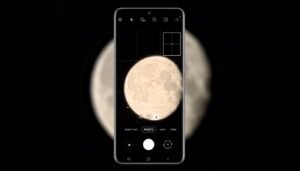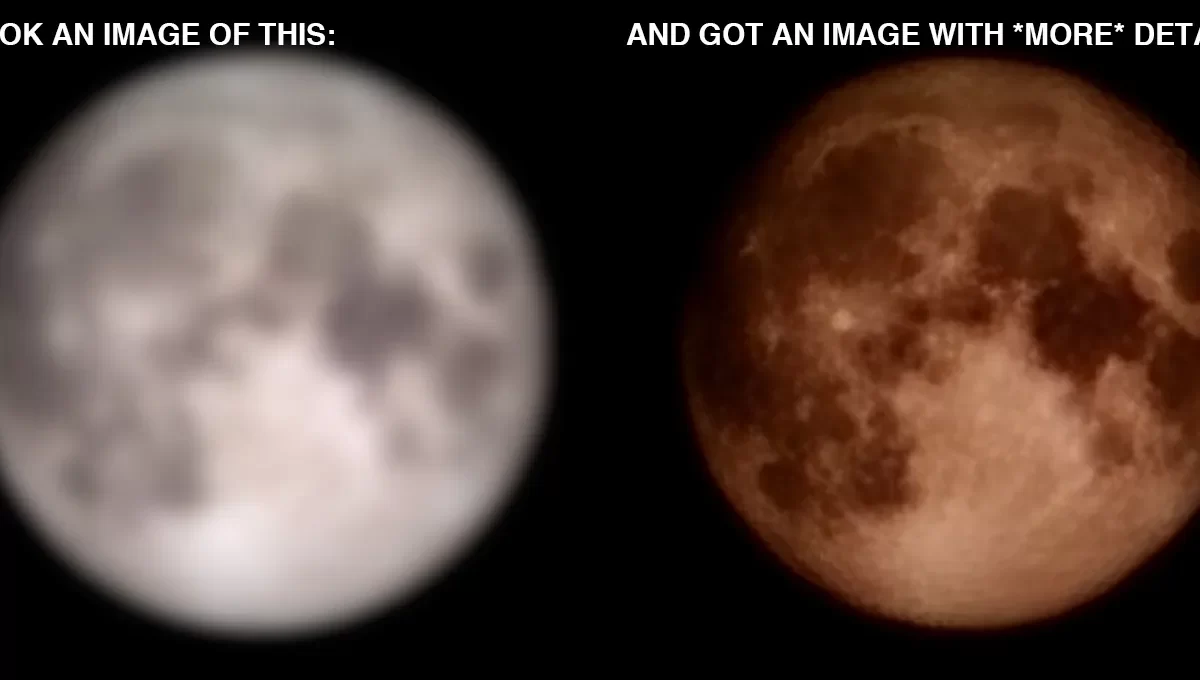Samsung Reply To Fake Moon Controversy
Samsung has written a blog post in English outlining the methods their phones employ to take pictures of the Moon. The article’s content isn’t very fresh and doesn’t provide any new information on the procedure; it looks to be a lightly altered translation of one that was published in Korean last year. But, since it is a certified translation, we can examine its description of what Samsung’s image processing technology does in greater detail.

The justification is in reaction to a widely shared Reddit post that demonstrated in graphic detail how much more information Samsung’s camera software adds to photographs while snapping a picture of what looks to be the Moon.
These complaints aren’t new (Input wrote a full article about Samsung’s moon photos in 2021), but the test’s ease of use increased awareness of the problem: Using a Samsung phone, Reddit user break photos simply took a picture of a deliberately blurred image of the Moon, adding extra information that wasn’t present in the original.
Here, you can see the distinction for yourself:
In a blog post published today, Samsung describes how its “Scene Optimizer” function, which supports Moon photography starting with the Galaxy S21 series, combines many methods to produce superior Moon images. The company’s Super Resolution function first becomes active at zoom ranges of 25x and above and combines more than 10 photos using multi-frame processing to lessen noise and improve clarity. Also, it employs a “Zoom Lock” technology that combines optical and digital picture stabilization to lessen image blur and improves exposure so the Moon doesn’t seem blown out in the night sky.

An “AI deep learning model” that has been “developed based on a range of moon forms and features, from full through to crescent moons, and is based on photographs acquired from our view from the Earth” actually identifies the Moon in the first place.
The Detail Improvement Engine, which Samsung characterizes as a convolution neural network (a class of machine learning model frequently used to analyze pictures), compares the outcome with improved detail to a “Reference with high resolution” in the process flow diagram below.
This could explain why ibreakphotos’ follow-up test, which involved adding a plain grey square to a blurry photo of the Moon, resulted in the blank square being given a Moon-like texture by Samsung’s camera software. It appears that this stage is adding detail that wasn’t present when the photo was originally taken.
Although this new blog post provides more information in English than what Samsung has previously stated in public, it’s unlikely to appease those who believe that any program capable of creating a convincing image of the Moon from a fuzzy shot is effectively fabricating the entire thing. Moreover, Samsung runs the danger of misrepresenting the capabilities of its phone’s zoom functions to buyers when these AI-powered features are used to sell phones.

Nevertheless, as my colleague Allison noted yesterday, Samsung’s camera software isn’t a million miles from what smartphone computational photography has been doing for years to squeeze out ever-more vivid and sharp images from comparatively tiny image sensors. According to Allison, “year after year, smartphone cameras advance, striving to make wiser assumptions about the scene you’re taking and how you want it to look. All of these activities take place in the background, and we often like them.
“Samsung continues to develop Scene Optimizer to decrease any potential confusion that may occur between the process of taking a photo of the real moon and an image of the moon,” reads the last sentence of Samsung’s blog post. (We emphasize.)
On some level, Samsung is simply saying: “We don’t want to be duped by any more crafty Redditors who snap photographs of Moon images that our camera mistakenly believes is the Moon itself.” Yet, the business is also emphasizing how much computational labor goes into creating these images and will continue to do so in the future. In other words, we’re still left with the same query: “What exactly is a photograph?”
Also, see
Dark Side Of Online Dating Apps – Don’t Get Into The Trap
Follow us on Instagram – here

